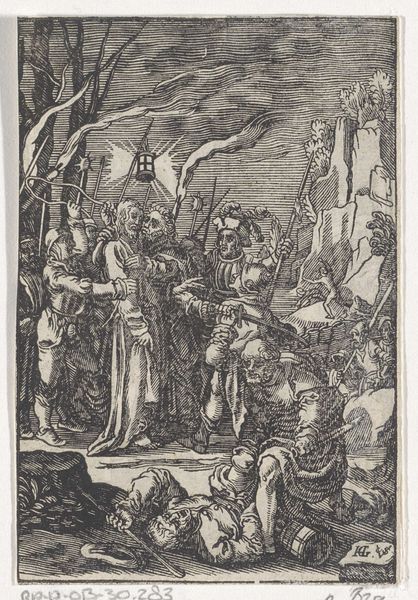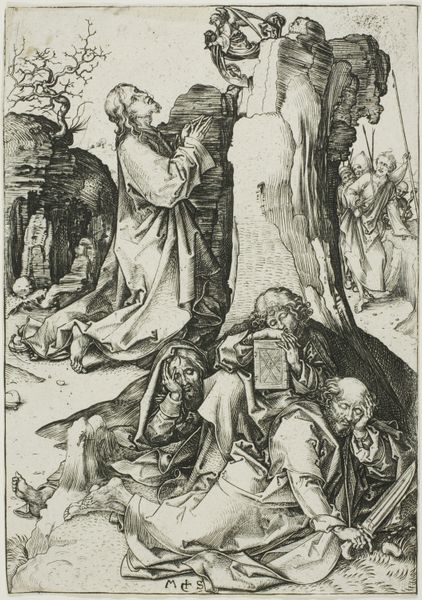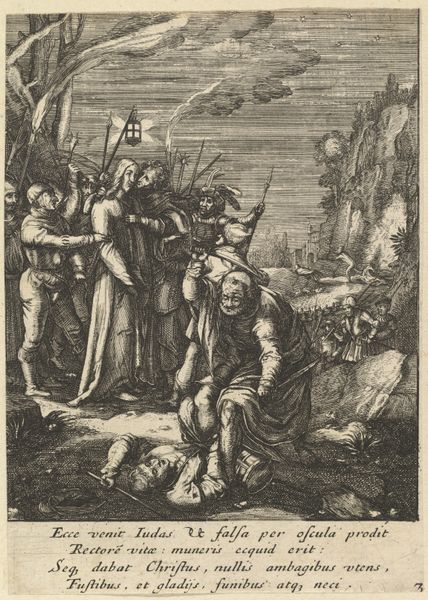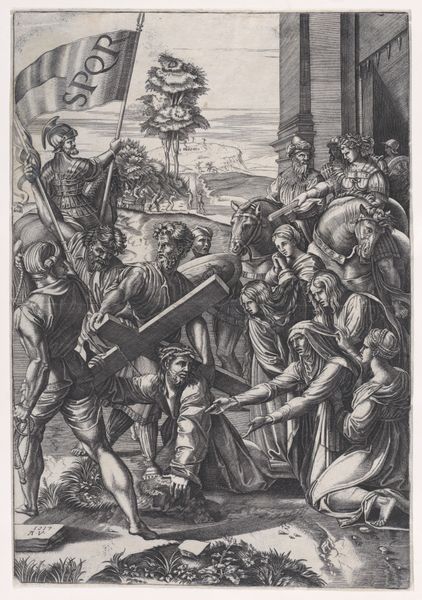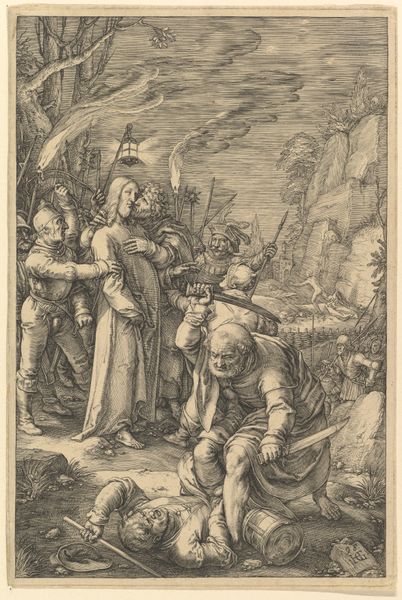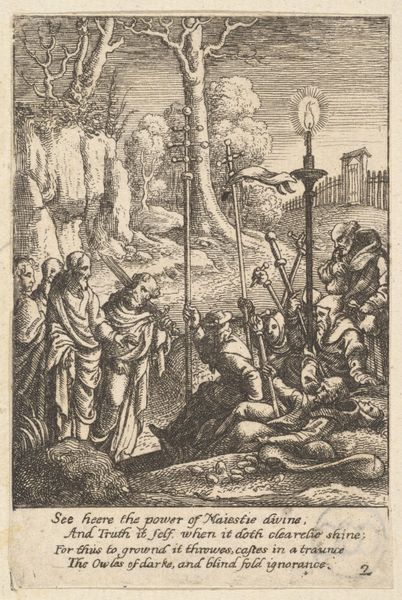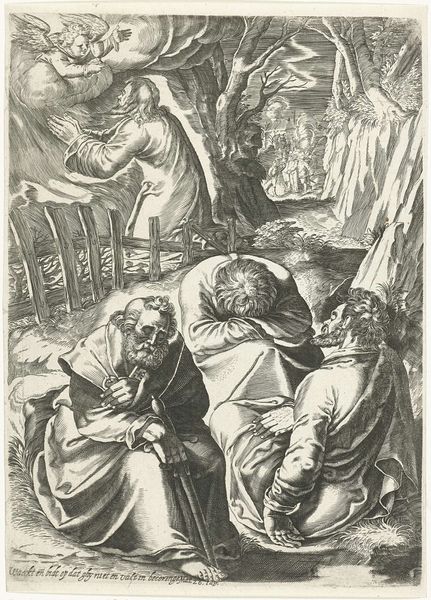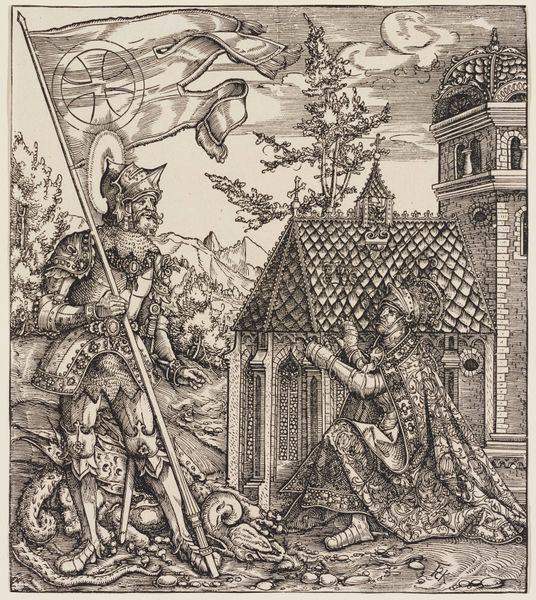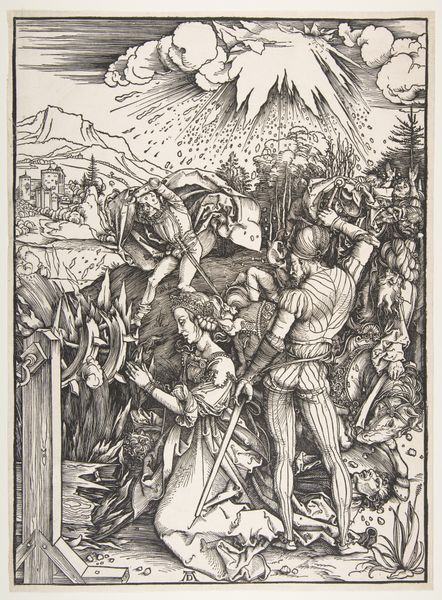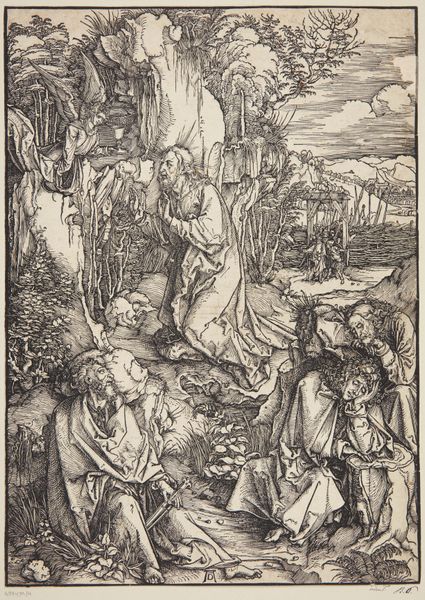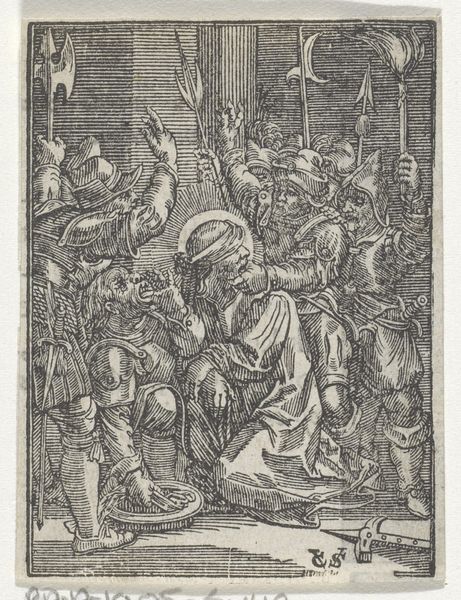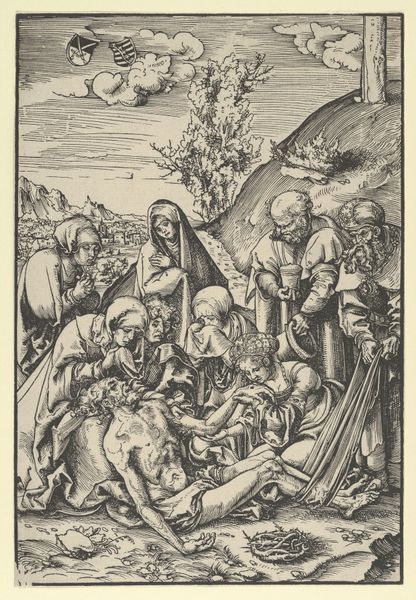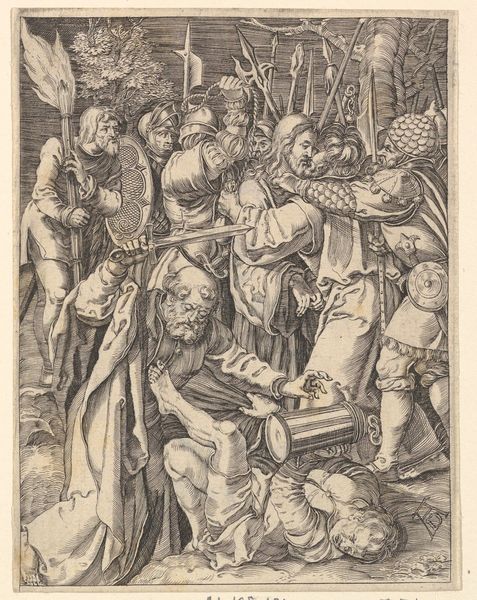
print, engraving
#
medieval
#
narrative-art
# print
#
figuration
#
history-painting
#
northern-renaissance
#
engraving
Dimensions: 305 mm (height) x 242 mm (width) (plademaal)
Curator: Let's consider this arresting image titled "Judas' Betrayal." It’s an engraving dating back to around 1620 by Albrecht von Horn. Editor: There’s a distinct drama here. The composition feels almost chaotic, with figures packed tightly. I am immediately struck by the level of active aggression in this piece, how does that fit in with the religious undertones you sense within the work? Curator: What is interesting in viewing it through the lens of history, is seeing how such prints helped propagate a specific iconography across Europe during the Reformation. Consider the dissemination of visual narratives – they served a crucial didactic purpose. The portrayal of Judas here feeds into broader anxieties around faith and betrayal within those communities at the time. Editor: I see the symbolic weight but I can't shake the visceral impact. Note how Judas's kiss – a gesture of supposed love – becomes a weapon. What statements can be drawn here in regard to how one can use familiarity to cause harm? Curator: Indeed, a reflection on the potent blend of sacred narrative with intense political messaging, no doubt crafted within Albrecht von Horn's broader social context. This particular visual interpretation helped shape perceptions of religious and political figures, cementing existing biases and narratives. The inclusion of this image by this museum indicates what it believes its public needs from artwork such as this, do you concur? Editor: I see your point, though it's equally vital to recognize the active role viewers play. Do we passively absorb propaganda, or can we challenge these biases? Perhaps understanding the print’s original context gives us a clearer picture of today. Do such engravings really tell one narrative or rather offer a gateway to numerous possibilities of historical understanding? Curator: Perhaps there is no one correct conclusion and meaning can, and does, transform with the passage of time. Understanding Albrecht von Horn’s work offers just a small peek into how imagery functions in a culture obsessed with its sociopolitical image. Editor: Perhaps art should not be seen simply as reflections but as agents of dialogue and active engagement through which different aspects of a community may speak to each other about concerns for now and, undoubtedly, later.
Comments
No comments
Be the first to comment and join the conversation on the ultimate creative platform.
